Not only is it fun to try new foods, but the ingredients and cooking techniques can be a great eye opener to a country. For example, Ghanaian cuisine relies a lot on locally grown staples like cassava, corn and plantains – which cooks in different regions of the country creatively use to make unique dishes. Most meals usually include some kind of meat or fish, and soups and stews are very popular.
When you volunteer in Ghana, you’ll probably encounter a few unfamiliar foods, which can take some getting used to. But there’s no need to be nervous! Here are some of the best traditional dishes to try when you volunteer in Ghana:
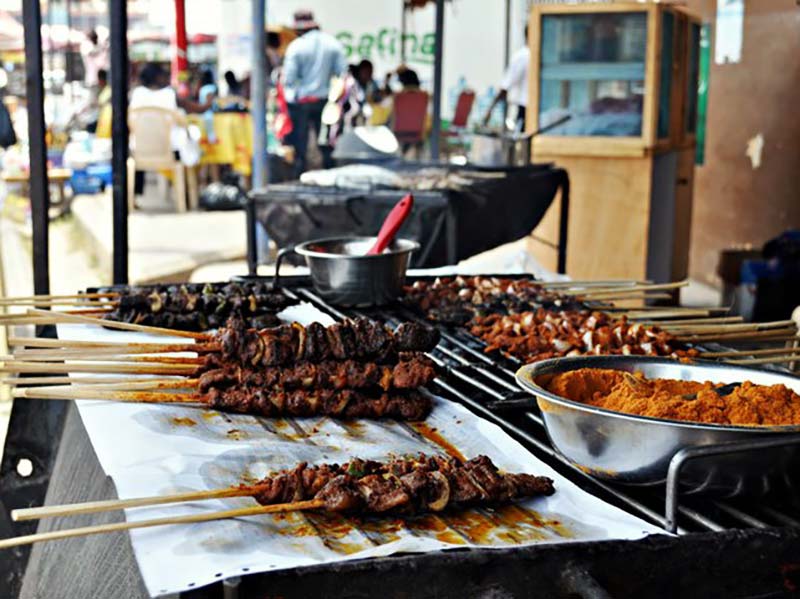
1. Chichinga
When you think street food, Ghana may not be the first place that comes to mind. But street food is just as vital here as it is in destinations like Thailand. Chichinga, a kind of kebab typically made with beef, chicken or goat is popular at Accra's street stalls. The whole thing is rubbed in a spice mix called suya, made with ground peanuts, peppers, and other spices.
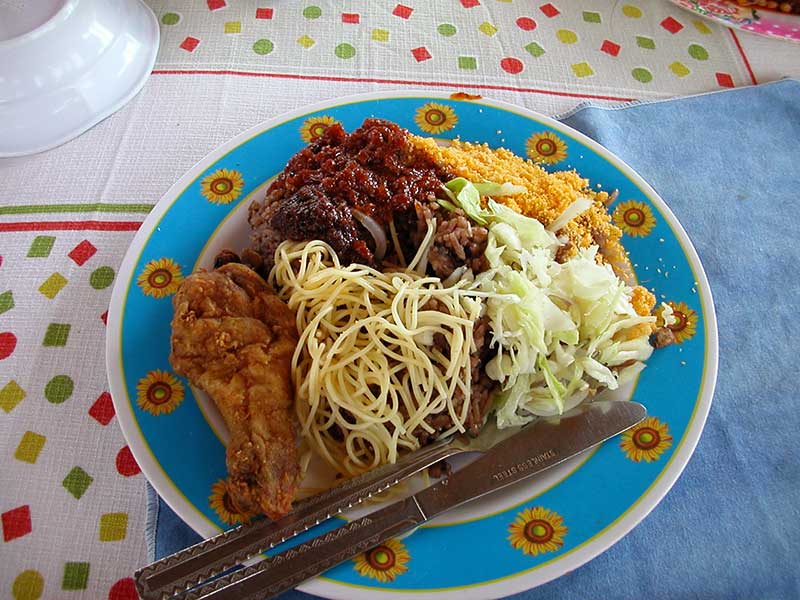
2. Waakye
Another street stall staple, waakye (pronounced “wa chi”) is often eaten for breakfast or lunch in Ghana. The dish is made with rice and beans and may be accompanied by sides like a spicy meat stew, fried fish, moist garri (grated cassava), spaghetti, boiled eggs, plantains, and vegetables. Street vendors often serve waakye in clear, plastic bags, or more traditionally, large plant leaves.
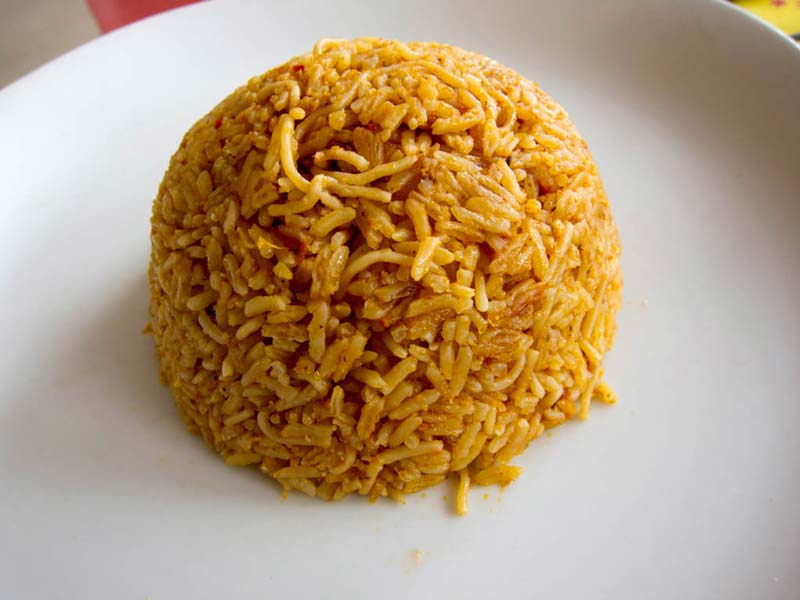
3. Jollof rice
Ghanaian jollof rice (not to be confused with Nigerian jollof rice) is a one-pot dish made with rice cooked in a tomato paste with other spices. The rice, with its distinctive orange color, is often served with chicken or beef. Don't forget a bit of shito, a spicy condiment made with ground prawns, tomatoes, hot peppers, onions and spices in oil.
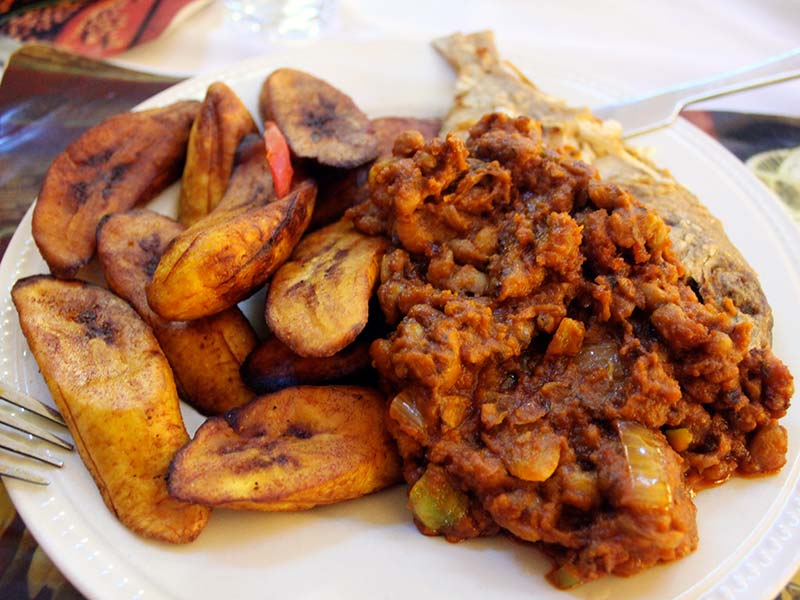
4. Red-red
Perhaps the most accessible entry to Ghanaian cuisine for first-timers, red-red is a mild bean stew made from black-eyed peas that’s great for those who shy away from spicy food. It’s usually suitable for vegetarians, though sometimes fish or prawn sauce is included (be sure to ask!) The dish gets its name from the color produced by the red palm oil and tomato paste used in the stew. And no dish of red-red is complete without a side of sweet fried plantains!
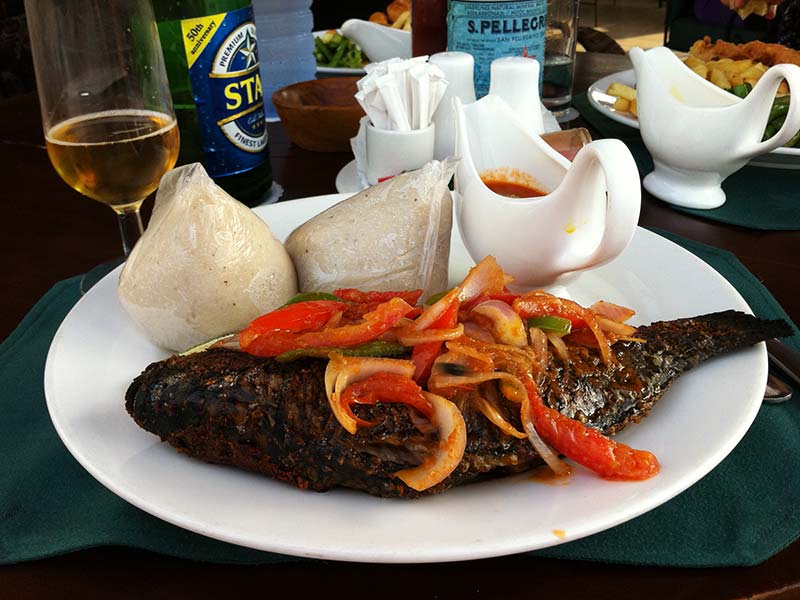
5. Banku and tilapia
This is considered a delicacy in Ghana and a favorite among locals. Banku is made from fermented corn and cassava, ground and shaped into large balls. When paired with fried tilapia and a large helping of shito, the result is too delicious for words.
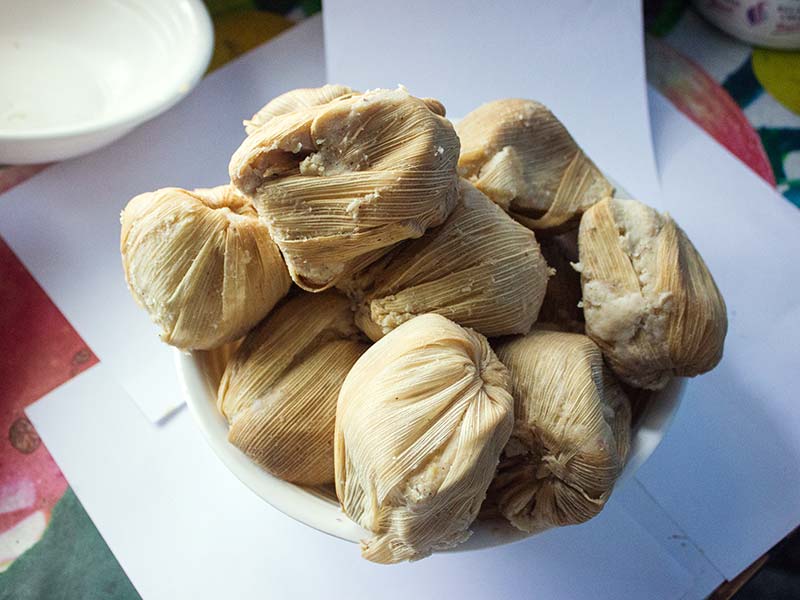
6. Kenkey
Similar to banku, this staple is made of ground fermented corn, wrapped in banana leaves or corn husks and then boiled. Kenkey is usually served with grilled or fried fish and the traditional hot pepper sauce.
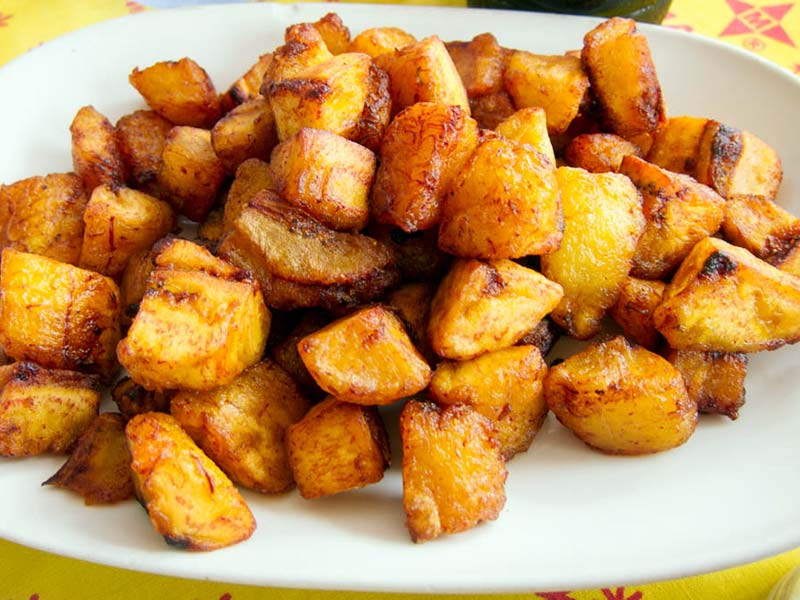
7. Kelewele
Speaking of plantains, kelewele is a must-try snack for anyone who visits Ghana. Made from cubed ripe plantains, soaked in peppers, ginger and garlic, and then fried, it’s a popular offering at street stall across Accra. The taste is a complex mixture of sweet and spicy.
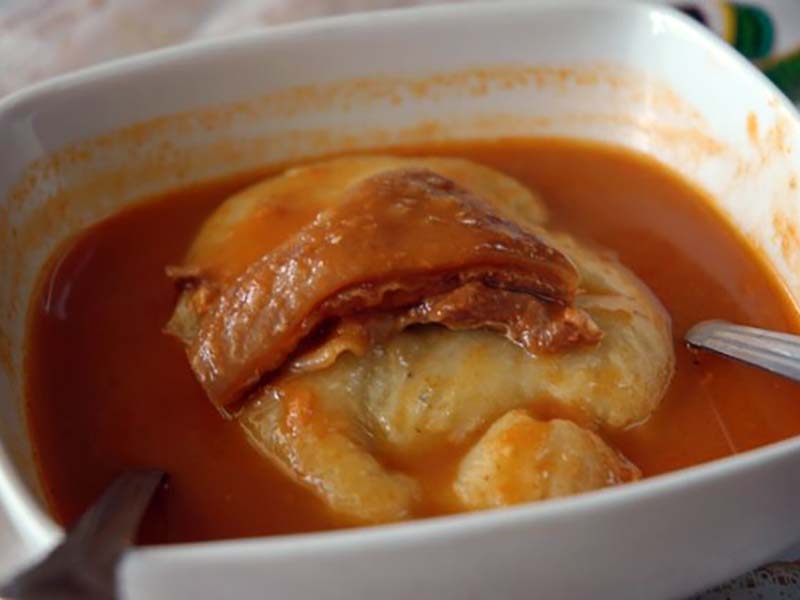
8. Fufu
A staple at any Ghanaian dinner table, fufu is a thick starchy dough made from unripe plantains and boiled cassava. Traditionally, cooks use a giant wooden pestle to pound the ingredients while a second person turns the mixture. The process is difficult and time-consuming, but the result is definitely worth it! Fufu is typically served with soups and stews and eaten by hand — experienced eaters use one hand to break off a piece and then scoop up a bit of sauce with the fufu.
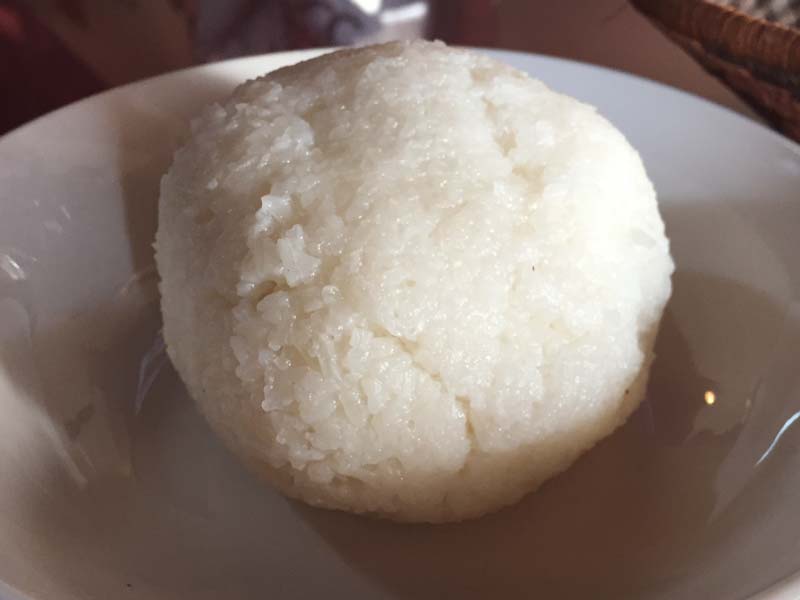
9. Omo Tuo
As you can probably tell, Ghanaians love to make starchy side dishes to soak up their soups, stews, and sauces. Well, omo tuo is yet another. It's made from cooked white rice that's been molded into balls and served with soup.
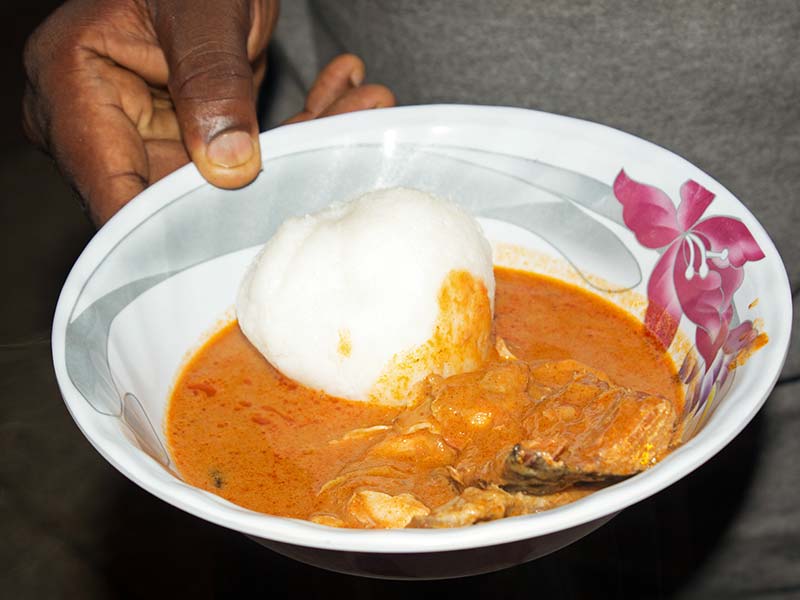
10. Groundnut soup
Groundnut is a staple crop in Ghana, where it’s typically used to make cooking oil and groundnut soup. The combination of ingredients may seem a bit odd to Western palates - it’s made with groundnut paste/ peanut butter, palm oil, goat meat, fish, plum tomatoes and other spices. But the influence of Indian flavors is recipe is unrecognizable in this dish. Of course, no soup is complete without some fufu or omo tuo.
Hungry yet?
Whether you’re sampling a dish made by our amazing private chefs in the volunteer dorm, sitting down to dinner with a host family or having lunch at a local restaurant with your fellow volunteers, Ghanaian food is a unique experience. Open your mind and be prepared to get your hands dirty. (Actually, make that “hand” — only the right is used for eating in Ghana!)
Want to learn more about volunteering in Ghana? Download our program brochure for more information.